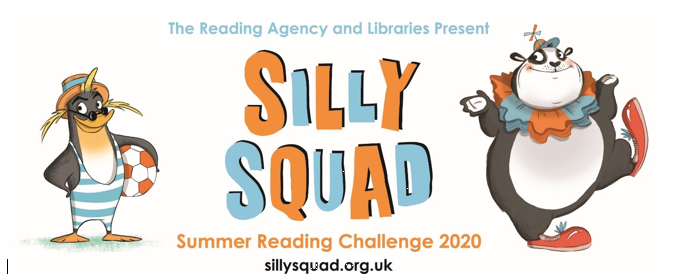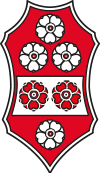- Home
- Our Learning
- Class Pages
- Willow Class
- Remote Learning March- August 2020
- Summer Challenges
- Reading Challenges
Reading Challenges

Year 1 Reading
Sign up for this year’s Kent Library Summer Reading Challenge

- It started on Friday 5 June and runs throughout the summer holidays, finishing at the end of September. It is aimed at children aged 4 – 11 and is completely free! The challenge features games, quizzes and downloadable activities to incentivise and encourage children and their families to take part in reading related activities at home. Children can choose their own reading goals, create book reviews, play games and collect virtual rewards. Parents and guardians can register their children online at www.sillysquad.org.uk

Also, your teachers have set you 10 St Barnabas Reading Challenges to complete over the Summer Holidays.
- Challenge 1: Dress Up
Dress up like a character from a favourite story. What can you find around the house to help make your costume? Get in to character and act out part of the story. Try to keep the story going and make up your own parts of the story for the characters that you are playing.
- Challenge 2: Retell It
Pick a story that you know really well. Learn the main parts of the story so that you are able to retell it in your own words.
- Challenge 3: Change a Character
Pick a story that you know really well. Change one of the characters to turn it in to a new story. For example, you could take The Tiger that Came to Tea and turn it in to The Spider That Came for Supper.
- Challenge 4: Change the Ending
Pick a story that you know really well. Change the ending to turn it in to a new story. For example, you could take We’re Going on a Bear Hunt and make it so they invite the bear in at the end.
- Challenge 5: Get Creative
Get inspired by a book you have read. Create a drawing, sculpture or piece of artwork inspired by your book.
- Challenge 6: Compare It
Find a well-loved story that has recently been turned into a T.V. programme. The Gruffalo, Zog, The Snail and the Whale, We’re Going on a Bear Hunt or The Tiger that Came to Tea. Read the book and watch the T.V episode. How were they similar? How were they different? Which did you prefer? Why?
- Challenge 7: Write to a Character
Pick a favourite character form a familiar story. Write to them. You could write a formal letter, a note to pass under their door, an email or even a text/WhatsApp message. It is up to you. Imagine that they received you message. What do you think they would write back?
- Challenge 8: Turn it into a Comic
Pick a story that you know really well. Draw pictures and use speech bubbled and captions to turn it into a comic strip.
- Challenge 9: Take it Outside
Pick a book that you love. Pick a setting from the book and take it to a real life location to read. For example, take The Gruffalo to a deep dark wood or The Snail and the Whale to the seaside.
- Challenge 10: Make a Book Nook
Make a special place in your house to read. Make it a cosy and snug space place to read on your own or with an adult.
If you manage to complete any of these challenges and would like to share them with us, send your pictures or work in to the Summer Challenge email address:
summerchallenge@st-barnabas.kent.sch.uk
